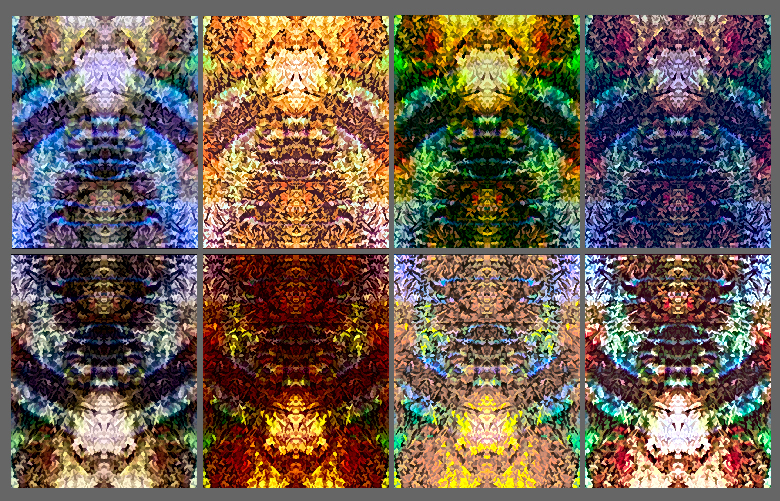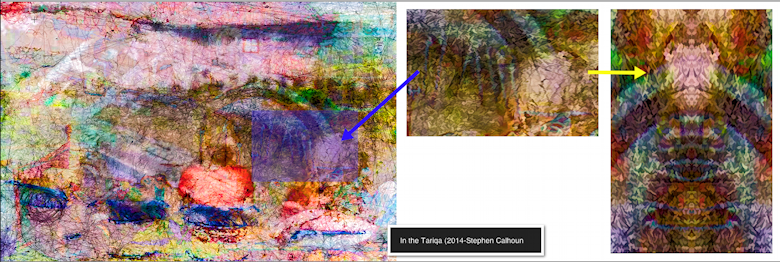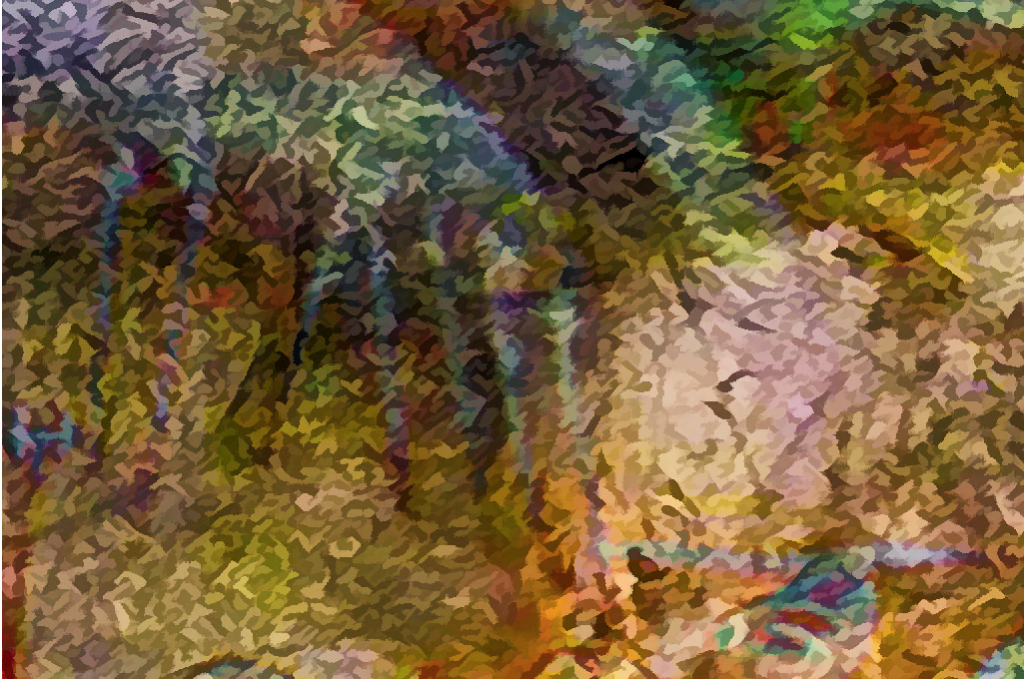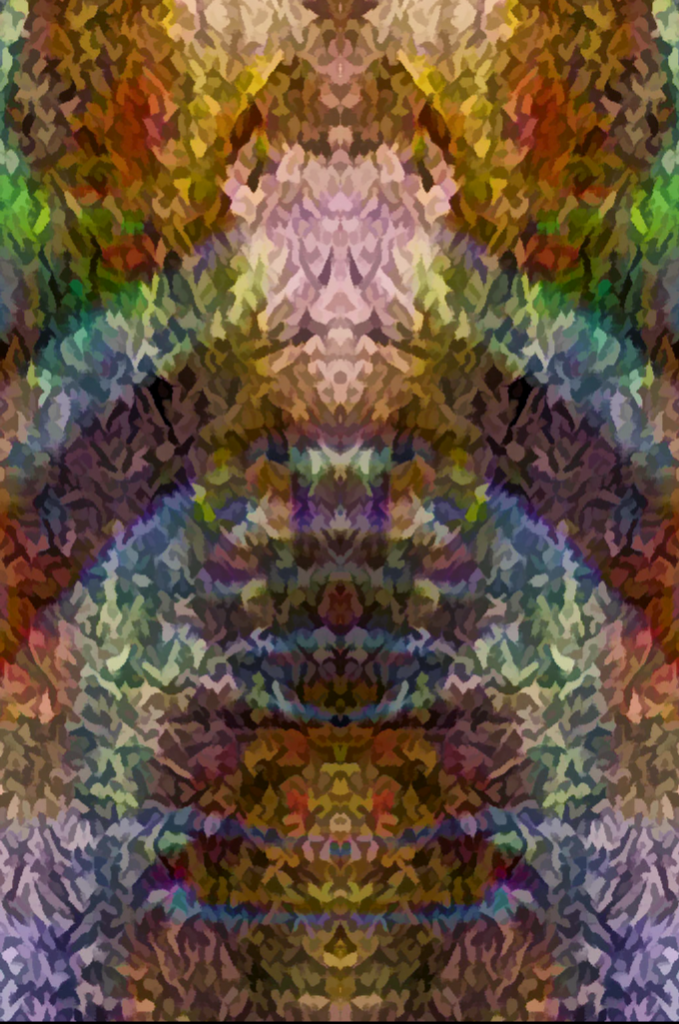In zoom mode in Photoshop, while preparing a large new piece to be reduced to a PNG for publishing on the gallery blog, an interesting overall configuration of small details in the edge style of the digital image file.
Because I’m nowadays very sensitive to the level of complexity a possibly worthwhile mirror transformation requires to hopefully capture an intriguing symmetry, I moved around the small scale details looking for a candidate. The first image shows the workflow and the second image above is the detail I discovered.
The result is a symmetry I like. (more I like)
The actual details of the 300dpi original are too small to really see in the 16×10″ proof.
The two hallmarks of my creative ethos and artistic experimentation are: generativity and recursion. I work toward a surprising conclusion by implicating those two procedural factors. In the visual realm the manifestation of both is very clearly exemplified in the above example: the discovery of a small scale within the large scale provides a recursive capture and the mirroring manipulation generates the symmetry. I act as a spotter.
Interestingly, the small scale details result from generative manipulations of the original piece, and the original piece itself is the result of blending two layers both captured in different generative procedures that are keyed by programmed search routines. Those generative instrumentalities, then, represent a recursive routine in their own right.
The final recursion is: this all evokes Gregory Bateson. (see: Peter Harries-Jones: Gregory Bateson, Heterarchies, and the Topology of Recursion. Cybernetics and Human Knowing 12(1-2): 168-174 (2005))
Among Bateson scholars, Peter Harries-Jones (1995) is notable for looking at Gregory’s “ecology of mind” in the context of his mature work, using terms for it associated with that period, “recursive epistemology” or “ecological epistemology.” The processes with which Gregory was concerned were essentially processes of knowing: perception, communication, coding and translation. Ergo epistemology. But basic to this epistemology was the differentiation of logical levels, including the relationship between the knower and the known, ergo a recursive epistemology. Ideally, the relationship between the patterns of the biological world and our understanding of it would be one of congruence, of fit, a broader and more pervasive similarity than the ability to predict in experimental contexts that depend upon simplification and selective attention. It seems useful to refer to Gregory’s ecology of mind as an epistemological ecology to contrast it with the largely materialistic ecology of academic departments. It seems essential to underline that recursiveness is a necessary feature of such an epistemology (and perhaps of every epistemology, since every effort to know about knowing involves the cat trying to swallow its own tail).
Bateson was haunted in his last years by a sense of urgency, a sense that the narrow definition of human purposes, reinforced by technology, would lead to irreversible disasters, and that only a better epistemology could save us. Certainly irreversibilities lie all around us, many, like global warming, the decay of the ozone layer, and the movement of poisons through global food chains, set on courses it is too late to change although we have yet to suffer their full effect. Still, the situation has not worsened as rapidly as he predicted and perhaps he sometimes succumbed to the lure of dramatizing a message in order to get it across in ways that later undermine that message. But the habits of mind that he described can be seen in every newspaper or newscast: the search for short term solutions that worsen the problem over time (often by mirroring it, such as violence used to oppose violence); the focus on individual persons or organisms or even species, seen in isolation; the tendency to let technological possibility or economic indicators replace reflection; the effort to maximize single variables (like profit) rather than optimizing the relationship among a complex set of variables.
Mary Catherine Bateson – new Introduction to Step to An Ecology of Mind by Gregory Bateson, 2000)
One last recursive piece – that can be thought of as recursive in a second order, thus by way of duplication and “re-relation.”

The Pir x Eight – (2014) S. Calhoun – 17×11 proof for giclee




Pingback: » In the Tariqa My Naive Art